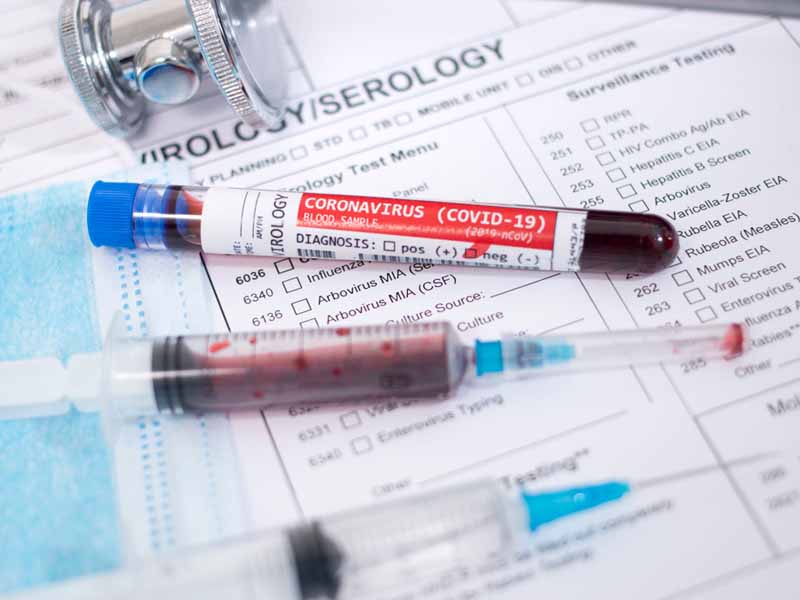HHS Issues Reporting Requirements for COVID-19 Testing
Physician Labs Must Initiate Compliance by Aug. 1
July 30, 2020, 02:35 pm Cindy Borgmeyer – AAFP members who operate office labs with a Clinical Laboratory Improvement Amendments certificate, take note: HHS has issued new reporting requirements that implement the agency's June guidance establishing national standards for data elements and patient demographic information related to COVID-19 testing that must be collected and reported.

The data reporting requirements, which also pertain to nonlaboratory testing locations and other facilities or locations that offer point-of-care or in-home testing related to SARS-CoV-2, mandate that data for every test performed to detect the virus or to diagnose a possible case of COVID-19 (e.g., viral, serology) be reported on a daily basis to the appropriate state or local public health department, based on the individual's residence, within 24 hours of when results are known.
According to HHS' guidance, "These data contribute to understanding disease incidence and trends: initiating epidemiologic case investigations, assisting with contact tracing, assessing availability and use of testing resources, and identifying supply chain issues for reagents and other material.
"Laboratory testing data, in conjunction with case reports and other data, also provide vital guidance for mitigation and control activities," the agency noted.
Breaking Down the Requirements
More details on the reporting requirements are outlined in an HHS FAQ document as well as on the CDC website, but here's a brief rundown.
Story Highlights
Data elements that physicians or other clinicians must collect and report include
- type of test, test ordering and administration dates, and test result;
- patient demographic factors such as age, race, ethnicity, sex;
- certain high-level patient residence information;
- limited information about the ordering clinician; and
- information about the location or facility where testing was performed.
Guidance about the appropriate test identification codes to use when reporting can also be found on the CDC site.
Reporting clinicians must also submit data on whether the patient is
- being tested for the first time;
- symptomatic or actively ill, including information on illness severity;
- pregnant;
- a health care worker; or
- resides in a congregate care facility such as a nursing home, residential care facility for people with intellectual and/or developmental disabilities, or homeless shelter.
Additional identifying information about the patient and the ordering clinician should be collected and reported to the state or local public health department but is not shared with the CDC.
Lab testing data may be submitted in one of three ways:
- directly to state or local public health departments, according to state or local law or policy, using existing reporting channels to facilitate rapid initiation of case investigations;
- via a centralized platform such as the Association of Public Health Laboratories' AIMS platform that will then route the data to the appropriate state and local authorities, as well as to the CDC after personally identifiable information has been removed; or
- using a state or regional Health Information Exchange that routes data to the appropriate state or local public health department and then to CDC as directed by the state.
Christine Schimpf, manager of the AAFP's Proficiency Testing Program, acknowledged that the new reporting requirements task physicians with gathering a substantial amount of information. "Fortunately," however, "most of it is data standard history housed in an EHR," she noted, meaning that in many cases, IT personnel can readily retrieve and collate the data for sharing.
In fact, Schimpf added, "during the Clinical Laboratory COVID-19 Response Calls sponsored by the CDC, this has been an ongoing issue for adequate surveillance to be done."
All in all, she concluded, "A standardized format and collection center should facilitate an improved response time and analysis of the disease."
Finally, it's important to note that reporting of the required data elements should begin as soon as possible but must start no later than Aug. 1.
Alignment With AAFP Advocacy
The AAFP has long recognized and worked to mitigate the adverse effects of racial and ethnic disparities on public health, efforts that have taken on even greater urgency in recent months given a rapidly growing body of evidence showcasing substantial disparities in infection and mortality rates among patients with COVID-19 based on race and ethnicity.
It is critical that HHS "collect, analyze and make available to the public explicit, comprehensive, standardized data on race, ethnicity and patients' preferred spoken and written language related to the testing status, hospitalization and mortality" associated with COVID-19, the Academy and other groups wrote in an April 3 letter to the agency.
More recently, the AAFP voiced strong support for legislation intended to address such health disparities. In a May 28 letter to the House and Senate sponsors of the COVID-19 Racial and Ethnic Disparities Taskforce Act (H.R. 6763 and S. 3721), the Academy praised the bill, which would convene an interagency, multisector task force to examine these inequities and develop policy recommendations to combat them.
That letter, which was signed by Board Chair John Cullen, M.D., of Valdez, Alaska, stated that any coordinated effort to fully address the pandemic "would be incomplete without strategies to reduce health disparities."
It's a sentiment echoed by Danielle Jones, M.P.H., director of the AAFP's Center for Diversity and Health Equity, who called the new reporting requirements "beneficial -- if in addition, steps are also taken to ensure equitable access to testing in underserved communities."
Read more about steps HHS is taking to address such inequities in a recent fact sheet from the agency.